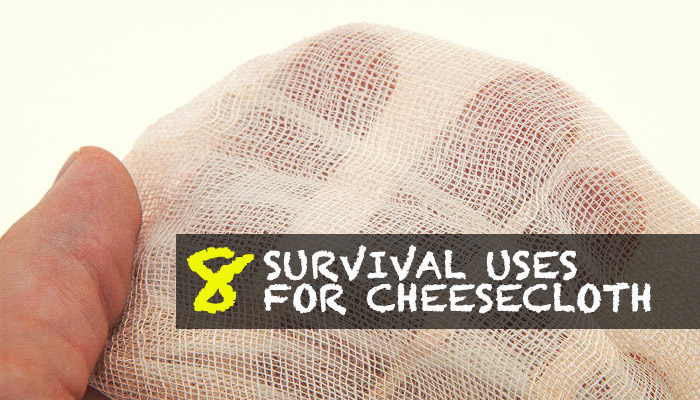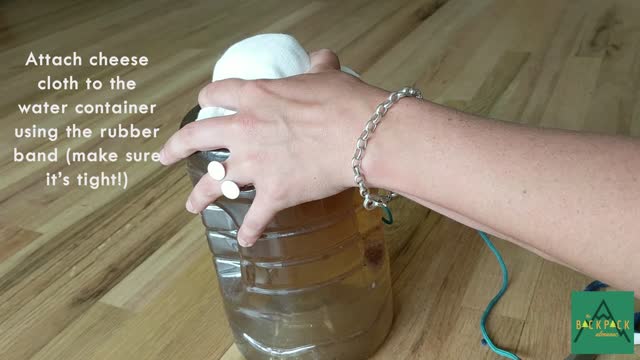
Tie the eight-layered cloth around the tap or place over the mouth of the water container and collect water. A Filtration using Cheesecloth 1.

Cheesecloth is primarily used for preparing cheese but can also be used to strain water and catch solid particles from various kinds of liquids.
How does cheesecloth filter water. A Filtration using Cheesecloth 1. Measure 500ml 2 cups of distilled water into a large graduated cylinder 2. Add 30 ml 2 tbsp of finely crushed leaves into the water and stir gently.
Record the appearance of the mixture in the cylinder. Place a clean piece of screen over a 1000-mL beaker labeled Beaker. You want to know how does cheesecloth filter water information.
Echemi helps you to follow how does cheesecloth filter water top topics hotspots and trends. Cheesecloth is primarily used for preparing cheese but can also be used to strain water and catch solid particles from various kinds of liquids. Coffee filters are usually made from 20 micrometer wide filaments which allows particles of 10-15 micrometers in width to easily pass through.
Tie the eight-layered cloth around the tap or place over the mouth of the water container and collect water. Clean your hands and the water-containers before collecting water. Keep the containers well covered.
After filtering wash the cloth with detergent or rinse with filtered water and dry it in the sun to disinfect it. Basic Cheesecloth Technique Cheesecloth is flexible which is great in most cases. But if it needs some support and structure use it with a colander mesh strainer or funnel.
Rinse the cloth under cold water. We tested our filter fabrics with water mixed with dried clay which we sieved down to particles of 20 microns in diameter or smaller. This was for the purpose of standardization - you can also try using murky water from a nearby pond or making your own water mixed with dirt or other suspension particles.
If the water is cloudy let it sit so particles settle on the bottom. Only filter the clearer water on the top. Or you can filter the water through a cheesecloth or a coffee filter.
Locate some bleach with 825 sodium hypochlorite. It should be unscented and have no additional cleaners added to it. All Cheesecloth is 100 cotton.
The thread count is 20 x 12 threads per square inch. Considered an open weave cheesecloth and used in applications that requires good air and water flow through the cloth. It is an all purpose economical and disposable fabric.
About Press Copyright Contact us Creators Advertise Developers Terms Privacy Policy Safety How YouTube works Test new features Press Copyright Contact us Creators. How do you sanitize a cheesecloth. FAQs Cheesecloth Rinse curds off with cold water immediately after you finish using it.
Wash as you would your dishtowels. Soak for a few minutes in baking soda to refresh after a couple of uses. Soak in boiling water for 5 minutes to sterilize or as some do.
Cheesecloth grades vary based on the number of threads used per square inch. Grade 10 Grade 40 grade 50 grade 60 Grade 80 and grade 90 cheesecloth. The grade means all the difference in cheese cloth thus explaining the varying cheesecloth uses.
Grade 10 10 Cheesecloth. Cheesecloth can be used as a prefilter for your water too. Simply allow the water to drain through the cheesecloth into your Sawyer filter or another container.
Once youve strained the large debris and particles from your water you can use the water purifying method of your choice. Yes cotton balls can be used in a filtration process but it is not a very effective filtration process. To do filtration using cotton balls one need to flow water through the cotton balls.
Secure cheesecloth folded as necessary to retain filter media in bottle around the neck of the open top bottle with rubber band. Nest the two bottles. Fill the top bottle to within 15 inches of its top with filter media of various types and layers.
Document the amounts and sequence of filter media used. Coffee Filter Whether you have disposable coffee filters or a reusable one either will work in place of cheesecloth when straining. Since the weave of the material is pretty tight it has to be to keep the grounds out of your coffee youll find it does a beautiful job of straining other foods.
Why not just pour it through a cheesecloth or coffee filter. Dear Mark The problem is that some of the sediment is small enough to pass through a cheesecloth or coffee filter and yet still big enough to make the wine in your glass feel gritty. It sounds like youre following the method I recommend but remember.